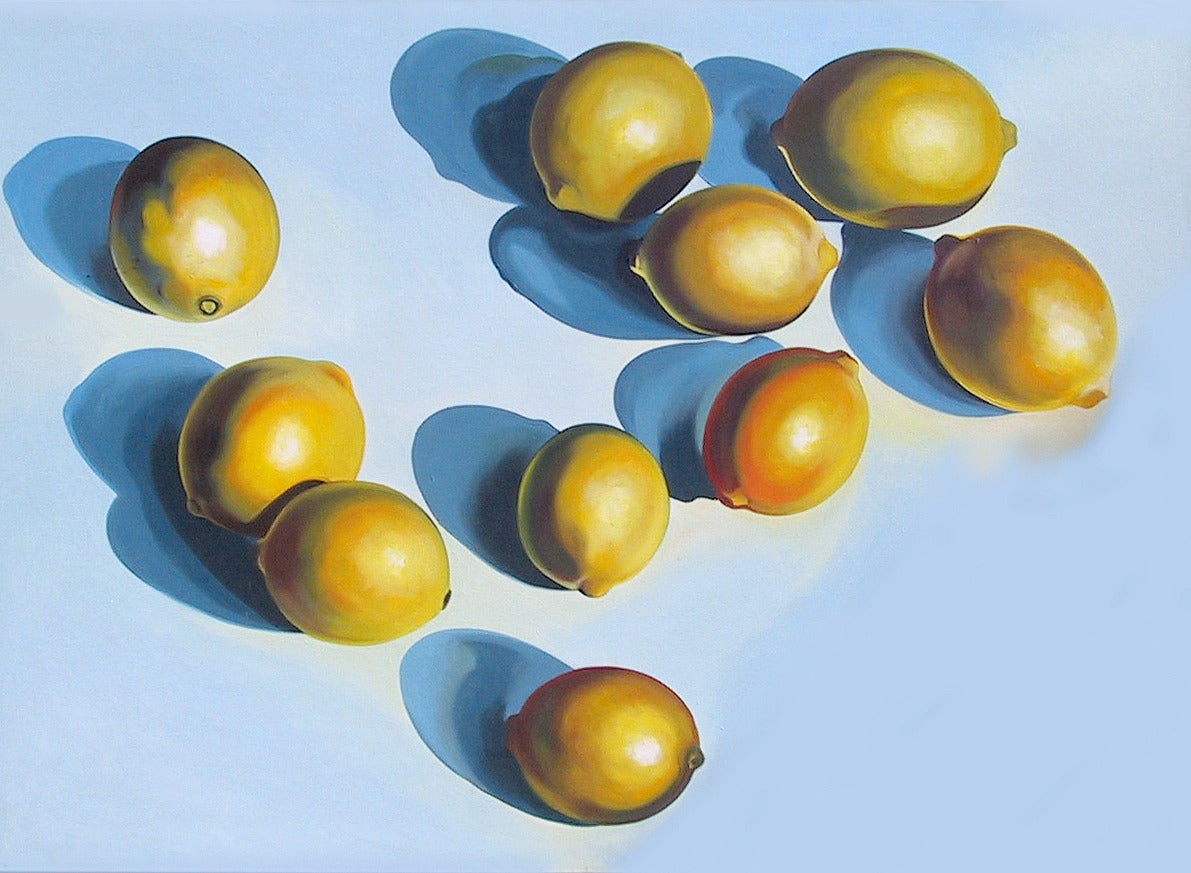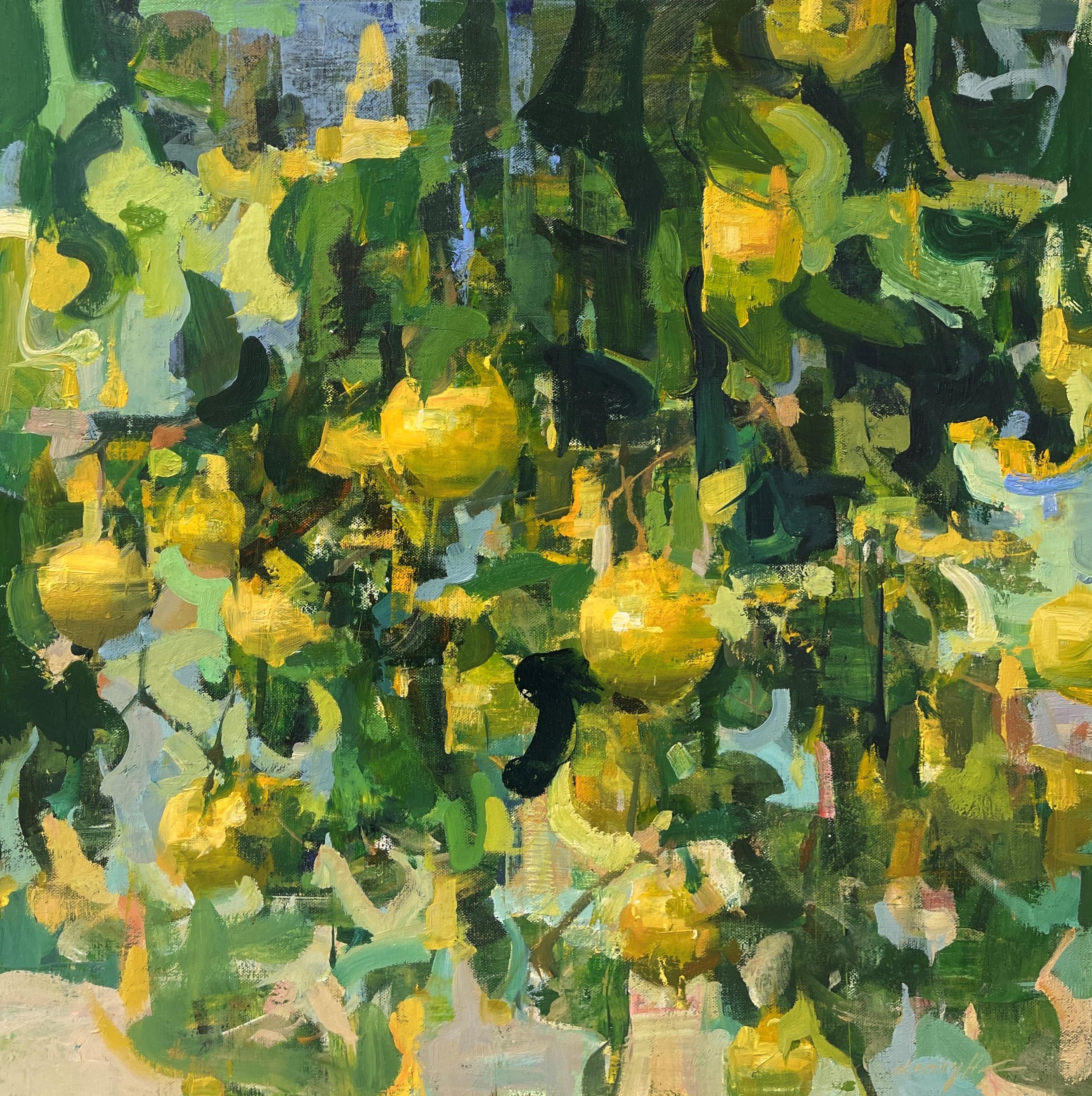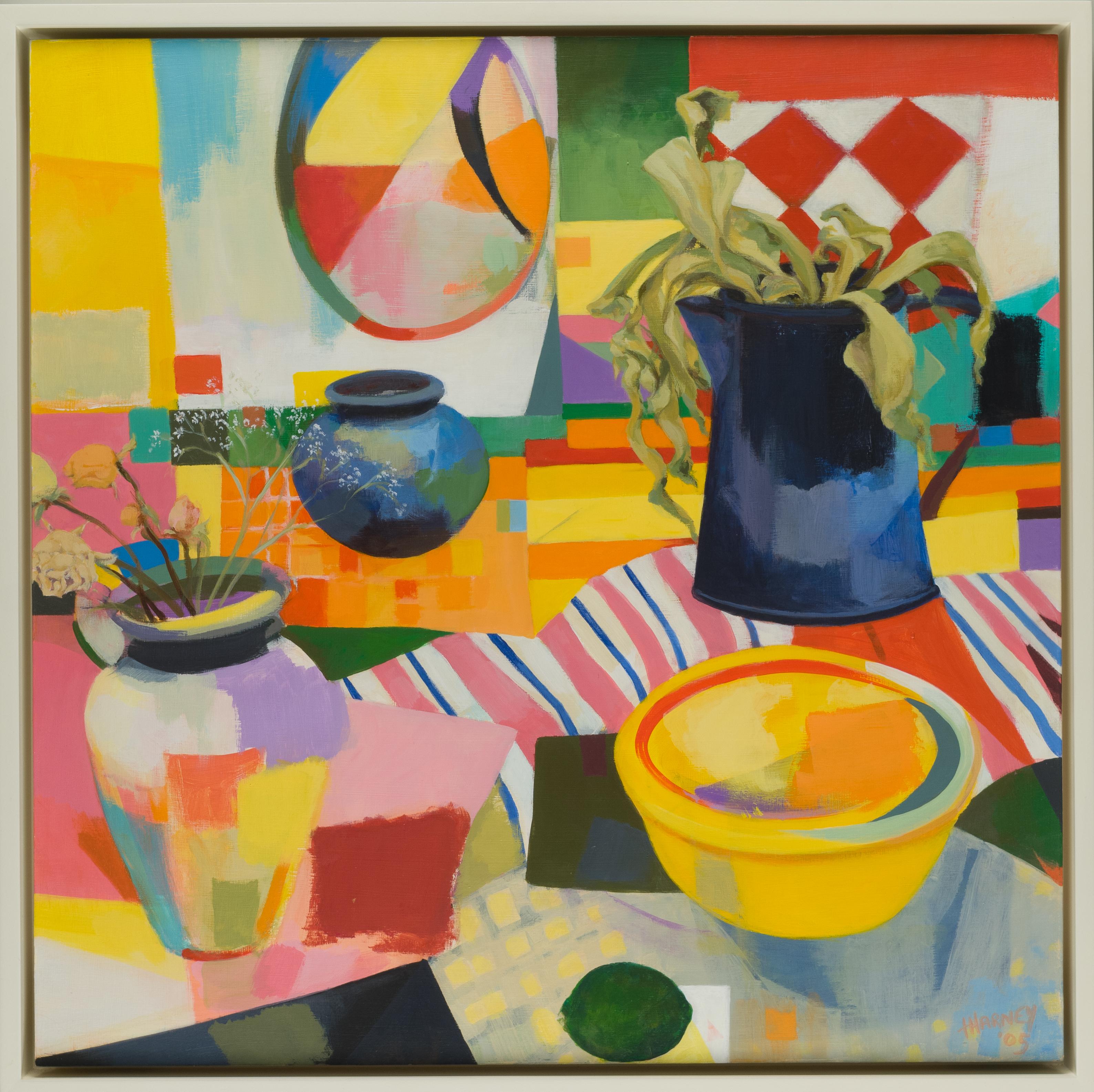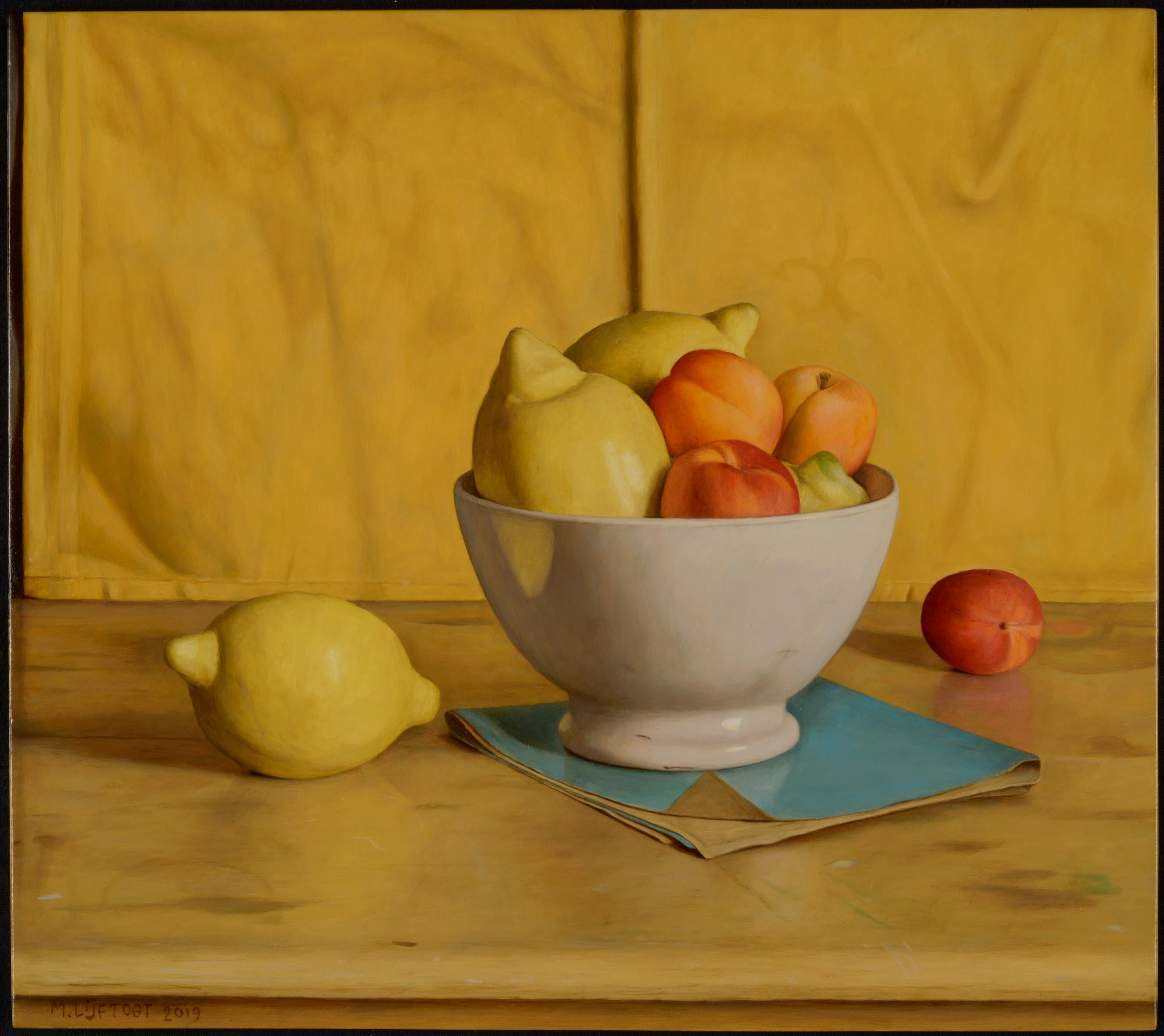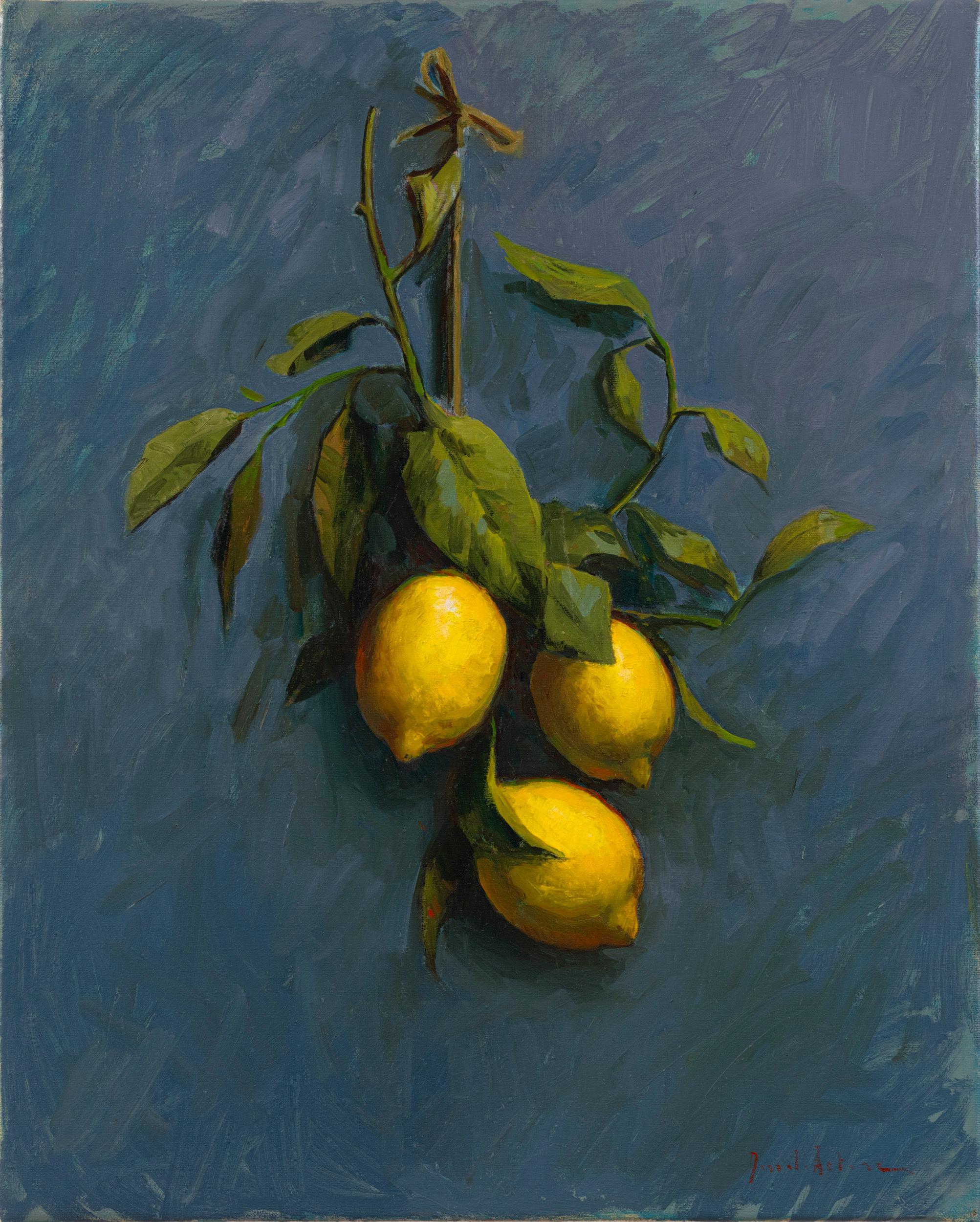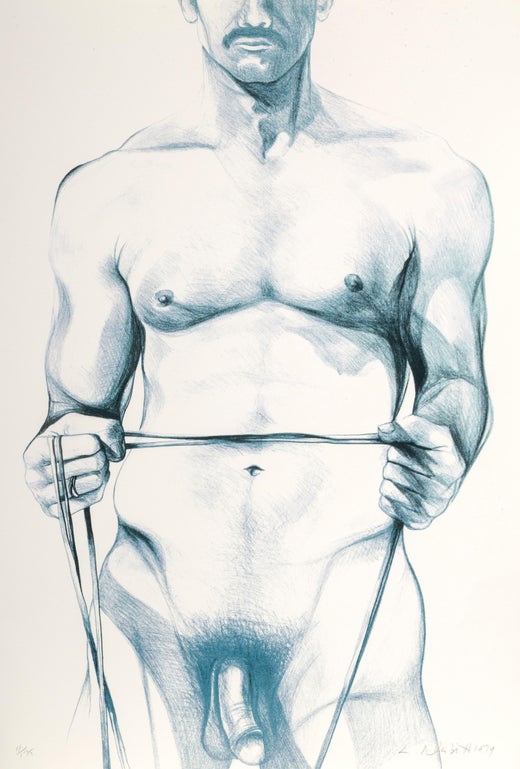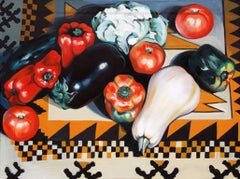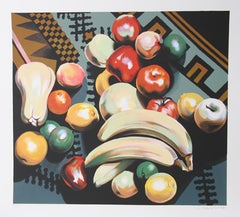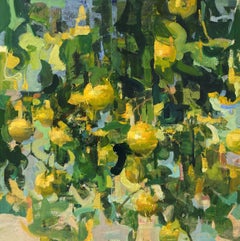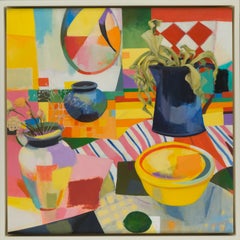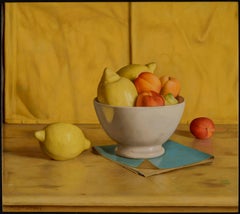Lowell NesbittLemons and Limes on Quilt1988
1988
About the Item
- Creator:Lowell Nesbitt (1933-1993, American)
- Creation Year:1988
- Dimensions:Height: 39 in (99.06 cm)Width: 48 in (121.92 cm)
- Medium:
- Movement & Style:
- Period:
- Condition:
- Gallery Location:Long Island City, NY
- Reference Number:1stDibs: LU4665874312
Lowell Nesbitt
Lowell Nesbitt was one of the most celebrated and noted artists for his floral works of art. An artist with a highly personal style, he made realistic studies of many themes throughout his career. His most well-known series, and perhaps his most beautiful and poetic, are the more than four hundred works he created using the flower as a theme. Beginning with his first show in 1957, Nesbitt had more than 80 one-man shows. His painting, drawings and prints are included in the collections of many prestigious museums such as the Metropolitan Museum of Fine Art in New York and the National Gallery of Fine Art in Washington, D.C.
- ShippingRetrieving quote...Shipping from: Long Island City, NY
- Return Policy
More From This Seller
View All1970s American Realist Still-life Paintings
Oil
1960s Cubist Still-life Paintings
Oil, Board
1970s Photorealist Still-life Paintings
Canvas, Oil
1970s American Realist Still-life Prints
Screen
1970s Contemporary Portrait Paintings
Canvas, Oil
1970s Photorealist Still-life Prints
Lithograph
You May Also Like
21st Century and Contemporary Photorealist Still-life Paintings
Oil, Panel
2010s Realist Still-life Paintings
Oil
Early 2000s Contemporary Still-life Paintings
Acrylic, Panel
21st Century and Contemporary Photorealist Still-life Paintings
Oil, Panel
21st Century and Contemporary Realist Still-life Paintings
Panel, Oil, Wood Panel
21st Century and Contemporary American Realist Still-life Paintings
Oil, Panel
Read More
Romare Bearden’s Humanity Infuses His Bright, Bold Art
Through collage, painting and printmaking, the artist foregrounded Black life in America in revolutionary new ways.
Chryssa’s 1962 Neon Sculpture Was Way ahead of the Art-World Curve
By working with lettering, neon and Pop imagery, Chryssa pioneered several postmodern themes at a time when most male artists detested commercial mediums.
